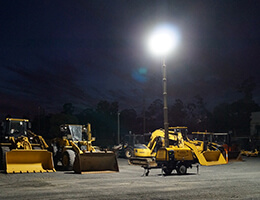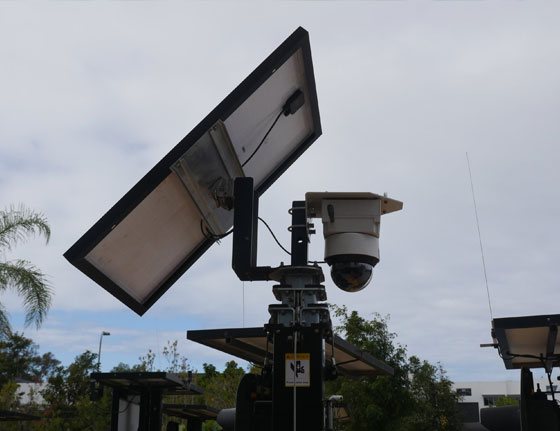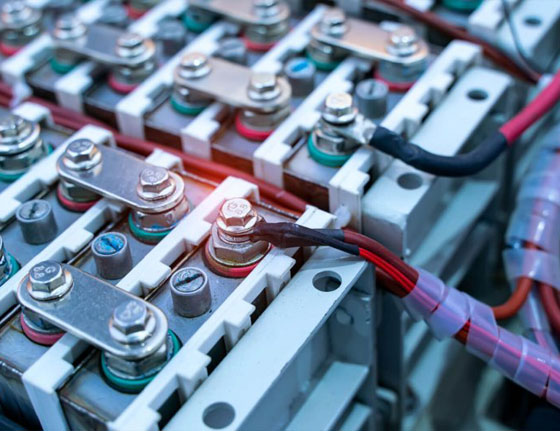Blog
Understanding the Importance of Solar Cables in Renewable Energy Systems
The increasing reliance on renewable energy sources, particularly solar energy, has underscored the significance of various components in photovoltaic systems, with solar cables playing a critical role. According to a report by Allied Market Research, the global solar cable market is projected to reach $1.2 billion by 2027, driven by the expanding adoption of solar energy installations worldwide. Solar cables are essential for efficient energy transmission, maintaining optimal performance and safety throughout the system's operational life. They are specifically designed to withstand harsh environmental conditions and are integral to ensuring that energy harvested from solar panels is effectively conveyed to inverters and storage systems. As the renewable energy sector continues to grow, understanding the specifications and selection of solar cables will become increasingly important to optimize system performance and promote sustainability.
The Role of Solar Cables in Enhancing Energy Efficiency in PV Systems
In the realm of renewable energy, particularly in photovoltaic (PV) systems, solar cables play a crucial role in enhancing energy efficiency. These specialized cables are designed to withstand environmental factors such as UV radiation, temperature fluctuations, and mechanical stresses, ensuring a reliable and safe energy transfer from solar panels to inverters and beyond. The efficiency of a solar energy system heavily depends on the quality and characteristics of these cables. By minimizing power losses during transmission, high-quality solar cables contribute significantly to maximizing overall energy output.
Tips: When selecting solar cables, ensure they are rated for the appropriate voltage and temperature. Look for cables that comply with industry standards and include features such as UV resistance and weatherproofing. This not only enhances durability but also ensures optimal performance over the lifespan of your renewable energy system.
Furthermore, proper installation of solar cables is essential for operational efficiency. Incorrectly installed cables can lead to increased resistance and potential overheating issues. Utilizing cable management systems can help organize and protect wires, reducing the risk of damage and ensuring a streamlined setup that boosts energy efficiency.
Tips: Always consult with certified professionals during the installation process to ensure that solar cables are routed correctly and securely. Regular maintenance checks can also prevent wear and tear, keeping your system running at peak performance.
Key Specifications and Standards for Optimizing Solar Cable Performance
Solar cables play a critical role in optimizing the performance of renewable energy systems, particularly in the context of solar power generation. With the rapid growth of the solar industry, especially in markets such as India, the demand for high-quality wires and cables has surged. According to industry reports, the rise in solar installations has driven a projected annual growth rate of over 20% for solar cable demand in the next few years. Key specifications for solar cables include the ability to withstand extreme environmental conditions, such as high temperatures and moisture, as well as excellent UV resistance, which ensures longevity and reliability in outdoor applications.
Standards set by organizations such as the International Electrotechnical Commission (IEC) dictate the performance criteria for solar cables. These standards help ensure that cables can handle the voltage fluctuations and thermal stresses characteristic of solar power systems. Additionally, advancements in design and materials have led to cables that not only meet but exceed these standards, thereby enhancing overall system efficiency. The integration of innovative technologies, such as advanced insulation materials and environmentally friendly manufacturing processes, further contributes to the sustainability goals of renewable energy systems while maintaining optimal performance.
Impact of Temperature and Environmental Factors on Solar Cable Lifespan
Solar cables play a crucial role in the efficiency and longevity of renewable energy systems, particularly in solar panel installations. However, their lifespan can be significantly influenced by temperature and environmental factors. Extreme temperatures, both high and low, can lead to the degradation of cable materials, which may result in reduced conductivity and increased risk of failure. Additionally, exposure to UV radiation, moisture, and pollution can compromise the structural integrity of solar cables over time.
To enhance the lifespan of solar cables, proper installation practices are vital. Ensure that cables are routed away from excessive heat sources and are protected from direct sunlight when possible. Using high-quality, UV-resistant cables can also make a substantial difference in their durability.
Tip: Regular maintenance checks can help identify any signs of wear and tear early on. Inspect cables for signs of cracking or discoloration, especially after severe weather events. Keeping the area around the cables free from debris will also help prevent any potential damage caused by falling branches or other environmental hazards.
Understanding the Importance of Solar Cables in Renewable Energy Systems - Impact of Temperature and Environmental Factors on Solar Cable Lifespan
| Temperature Range (°C) | Expected Lifespan (Years) | UV Exposure (Hours/Day) | Environmental Conditions | Impact on Lifespan |
|---|---|---|---|---|
| -10 to 30 | 25 | 3 | Mild & Dry | Minimal impact |
| 30 to 50 | 20 | 6 | Hot & Humid | Moderate impact |
| 50 to 70 | 15 | 8 | Extreme Heat | Significant impact |
| 0 to -10 | 30 | 2 | Cold & Dry | Low impact |
| 30 to 70 | 10 | 10 | Severe Conditions | Critical impact |
Choosing the Right Solar Cables: Material Types and Their Advantages
When it comes to selecting solar cables for renewable energy systems, understanding the different material types is crucial in maximizing performance and longevity. The most common materials used for solar cables are copper and aluminum. Copper cables are known for their superior conductivity and resistance to corrosion, making them an ideal choice for areas with high humidity or stifling weather conditions. They also require less insulation, which can result in reduced installation costs. However, the weight and price of copper can be drawbacks for some applications.
On the other hand, aluminum cables offer a lightweight and cost-effective alternative. While they have lower conductivity compared to copper, advancements in technology have improved their efficiency significantly. Additionally, aluminum cables are resistant to oxidation and offer good performance in various environmental conditions. Choosing the right solar cable material ultimately depends on the specific needs of the solar installation, including budget constraints, environmental factors, and desired lifespan. By carefully evaluating these options, users can ensure a reliable and efficient renewable energy system.
Understanding the Importance of Solar Cables in Renewable Energy Systems
Industry Insights: Trends and Innovations in Solar Cable Technology
The solar cable technology sector is witnessing significant innovations and trends that are crucial for the overall development of renewable energy systems. With the global shift towards sustainable energy, the demand for advanced solar cables is surging. These cables are essential for connecting solar panels to inverters and other electrical components, ensuring efficient electricity transmission. The latest insights indicate a growing emphasis on durability, weather resistance, and enhanced conductivity, which are crucial factors as solar installations become increasingly widespread.
Moreover, the market for solar-related technologies, including transparent solar cells and aluminum cables, reflects a burgeoning industry poised for substantial growth. The transparent solar cells market alone is projected to reach nearly $90 million by 2032, while the aluminum cables market is expected to surpass $70 billion by 2034. These figures highlight the pivotal role of infrastructure components like solar cables in supporting the expansion of solar power. Innovations in materials and design are not only driving efficiency but also reducing costs, making solar energy more accessible to consumers and businesses alike.





